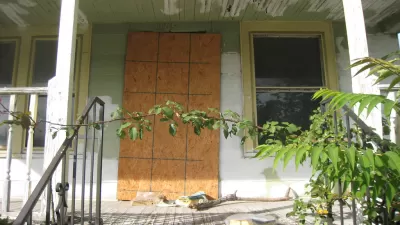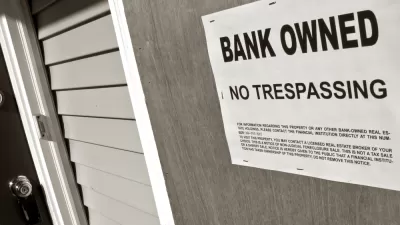The Innovation Team in Mobile shows that sometimes innovation can be delivered through commonplace technology.
J.B. Wogan reports on the surprisingly low-cost solution developed in Mobile, Alabama: using the image and mapping capabilities of the popular social media app Instagram to make an initial survey of the city's blighted properties.
After receiving a $1.65 million grant last December as one of the Bloomberg Philanthropies "Innovation Teams," Joan Dunlap and her team in Mobile was able to implement Instagram at no cost to fill a badly needed survey need to begin to document the location and scale of the city's blighted properties:
"The city could create an account and send code enforcement officers to take photos of blighted properties. The app would automatically document the general location of the photo and its mapping function allowed the mayor’s team to see where the biggest concentrations of blight were. Unlike the 311 call data, it was easily accessible from any workers’ computer and could be updated as officers found more properties."
In effect, Instagram helped kick start the effort by gathering data that the city previously could not access. After the initial, Instagram-enabled survey, the Mobile's Geographic Information Systems department provided "a better app that allows [code enforcement] to pinpoint the exact locations of each property." In the end, the city was able to collect data and begin to build a strategy for mitigating 1,256 blighted properties, according to Wogan.
FULL STORY: How Mobile, Alabama, Used Instagram to Address Blight

Maui's Vacation Rental Debate Turns Ugly
Verbal attacks, misinformation campaigns and fistfights plague a high-stakes debate to convert thousands of vacation rentals into long-term housing.

Planetizen Federal Action Tracker
A weekly monitor of how Trump’s orders and actions are impacting planners and planning in America.

In Urban Planning, AI Prompting Could be the New Design Thinking
Creativity has long been key to great urban design. What if we see AI as our new creative partner?

King County Supportive Housing Program Offers Hope for Unhoused Residents
The county is taking a ‘Housing First’ approach that prioritizes getting people into housing, then offering wraparound supportive services.

Researchers Use AI to Get Clearer Picture of US Housing
Analysts are using artificial intelligence to supercharge their research by allowing them to comb through data faster. Though these AI tools can be error prone, they save time and housing researchers are optimistic about the future.

Making Shared Micromobility More Inclusive
Cities and shared mobility system operators can do more to include people with disabilities in planning and operations, per a new report.
Urban Design for Planners 1: Software Tools
This six-course series explores essential urban design concepts using open source software and equips planners with the tools they need to participate fully in the urban design process.
Planning for Universal Design
Learn the tools for implementing Universal Design in planning regulations.
planning NEXT
Appalachian Highlands Housing Partners
Mpact (founded as Rail~Volution)
City of Camden Redevelopment Agency
City of Astoria
City of Portland
City of Laramie




























